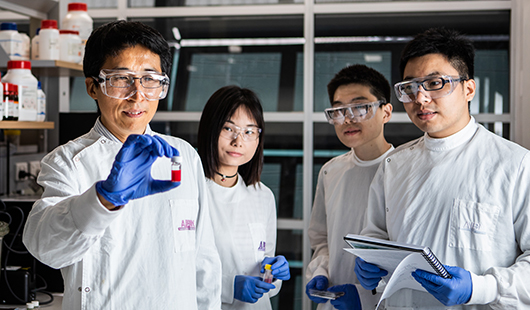Green Innovation: Solar Tech

With a number of Australian universities making headlines with recent breakthroughs in energy technology, let’s take a look at some of the more exciting projects being installed and trialed in 2020.
- Quantum Dot Solar
Sunshine state researchers at the University of Queensland have just been recognised for record-breaking energy generation using nanoparticle technology, also known as quantum dots.
Quantum dots are cool because they are less rigid than conventional silicon wafer solar cells and can be applied to various surfaces via 3D printing type techniques. Another bonus is the printed cells can even produce energy is very low-light conditions. - Perovskites
Over the border, researchers from the University of New South Wales and the University of Sydney have been experimenting with a potential game changing material called perovskite. Special solar panels using this material recently passed a number of humidity and heat tests that indicate durability for commercial viability and widespread use.
With typical perovskite layers being compared in size to human hair this technology has incredible placement potential while being relatively inexpensive to manufacture. - Solar Glass
Solar glass has been generating buzz for a number of years but due to manufacturing costs and limited availability is hasn’t yet been widely implemented. 2020 is seeing significant growth as more solar glass is being utilised by governments and developers increasing commitments to sustainability.
Australian producer ClearVue has grown out of research undertaken at Edith Cowan University in Western Australia and has seen significant interest from local and international buyers. Who doesn’t want windows that generate energy? - Concentrated Solar
Touted as a safer alternative to nuclear power, concentrated and thermal solar plants are older concepts gaining renewed interest with innovative advances. Configurations vary but generally consist of multiple mirrors or panels concentrating sunlight to a central point.
Despite recent setbacks with government funding, local experts suggest a network of small concentrated solar power systems (CSPs) could fully support national energy consumption needs. US start-up Heliogen is generating buzz and winning awards with concentrated solar plants for industries that require extreme heat production. Combining mirrors, cameras, and state of the art software, Heliogen showcases how futuristic powerplants can adjust to the sun. - Smarter Grids
As more Australian households and businesses install solar panels, the scope for community generation is enormous. South Australia is leading the way with approximately 35% of households having solar installed. This massive intake has created some issues for the legacy infrastructure but as grid management catches up, clean energy will become the norm.
Microgrids projects are also popping up in place of traditional big grid infrastructure. Our friends at WattWatchers are currently testing feasibility with the MyTown Microgrid with hopes to deploy cost-effective microgrids to regional communities all around Australia.
Photo credit: University of Queensland
